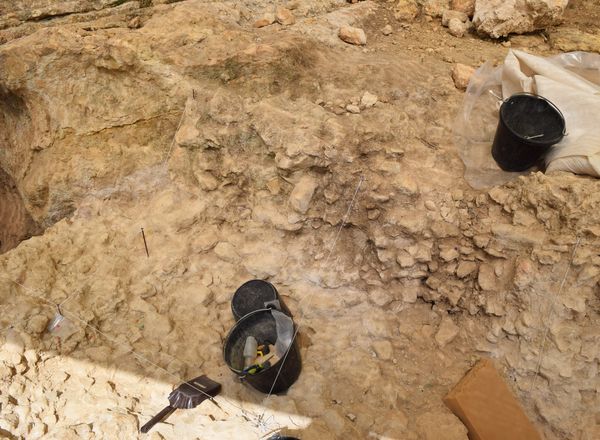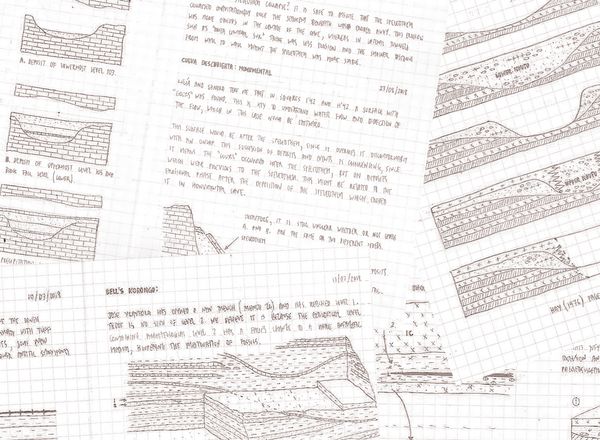Taphonomy of Cenozoic vertebrate sites
Taphonomy is a subfield of palaeontology that studies how organic remains, such as bones, transform into fossils, transitioning from the biosphere to the lithosphere. This discipline, studied alongside the geology of a site, can tell us in detail the site formation processes, vital to the understanding of a fossil assemblage.
I am currently analysing the fossil remains of two Batallones Butte Miocene (ca. 9 Ma) sites (Batallones-3 and Batallones-10, Madrid, Spain), combining geology and taphonomy for my PhD under supervision of Dr. Jorge Morales and Dr. M. Soledad Domingo, at the National Natural Sciences Museum – CSIC, in Madrid. Also under supervision of Dr. M. Soledad Domingo (to whom I owe all my taphonomical knowledge), we carried out taphonomic studies of the Miocene mammalian fossil site of Somosaguas-North (ca. 14 Ma), located in the Madrid Basin (Spain) as part of my Master’s Thesis.
Geoarchaeology
Geoarchaeology is a subfield of geology that applies concepts and methods of other geological disciplines such as sedimentology, stratigraphy, geomorphology or paleontology to archaeological problems. Geoarchaeology is another critical subject in order to completely understand site formation.
I am lucky enough to be involved as a geoarchaeologist since 2015 in one of the most iconic and important Pleistocene archaeological sites: Olduvai Gorge (Tanzania), learning from Dr. Manuel Domínguez-Rodrigo (UCM, Institute of Evolution in Africa) and Dr. David Uribelarrea (UCM, Institute of Evolution in Africa). I am very grateful to both for giving me the opportunity to learn beside them and work in such a prestigious setting. Since 2018, I have also been kindly offered to work beside Juan Manuel Maillo (UNED, Institute of Evolution in Africa) at Nasera Soit (Tanzania) and other Middle Stone Age sites at Olduvai Gorge (Tanzania) and alongside Enrique Baquedano (Regional Archaeological Museum, Institute of Evolution in Africa), Juan Luis Arsuaga (UCM) and Alfredo Pérez González (CENIEH) at the famous Neanderthal sites of Calvero de la Higuera (Madrid, Spain).


